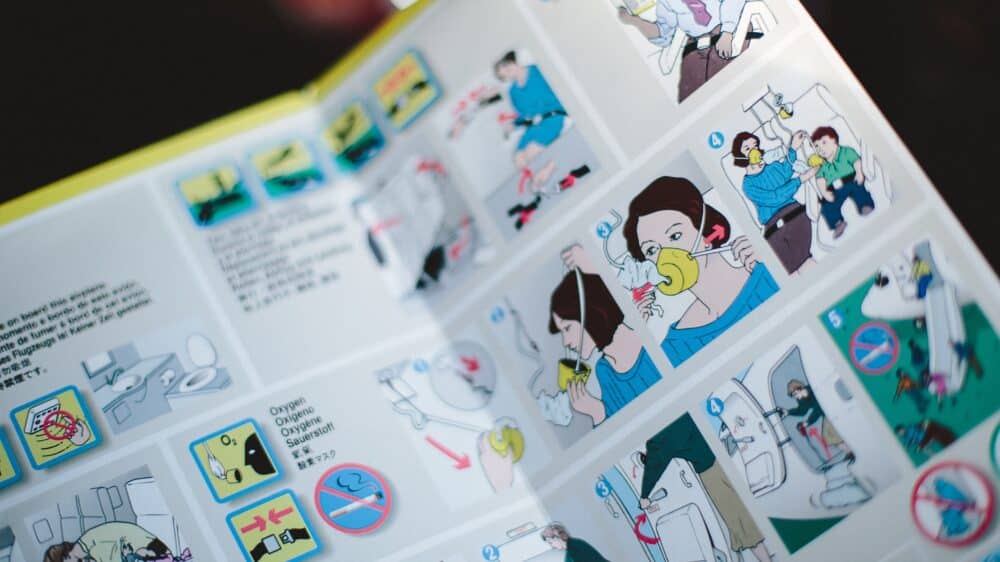Night terrors are a normal part of children’s development and tend to disappear with age, just like nightmares.
It is important to differentiate between a nightmare and a night terror. When a child has a nightmare, it is important for the parent to wake them up and provide comfort. On the other hand, if it is a night terror, the parent must ensure the child’s safety and wait for the episode to pass without waking them up.
To learn how to react appropriately and, most importantly, to understand the difference between having a nightmare and experiencing a night terror, we invite you to read the article, “Nightmares and night terrors: Differentiating to better understand and respond effectively.”
Research has made significant progress, but the causes and recommended interventions for night terrors still occupy the attention of scientists worldwide. In the majority of cases, no treatment is required.
Here are the most common causes and strategies to prevent or reduce night terrors identified to date.
Avoid stress and sleep deprivation, as they are the primary triggers of night terrors. Keep in mind that getting enough sleep and maintaining a regular sleep schedule is an essential protective factor to prevent these episodes.
Overcoming and preventing night terrors
Do not intervene during the episode: Calmness and safety are sufficient
Parents often describe night terrors as intense and highly distressing. It is natural to feel helpless or panicked when faced with your child’s inconsolable mood, restlessness, and expression of fear.
The best way to respond during the episode, in order to avoid exacerbating and prolonging it, is to:
- remain calm;
- avoid waking the child;
- ensure their safety to prevent them from getting hurt.
Waking up a child can increase their state of fear and confusion, making them more aggressive/defensive, and even prolong the episode as they will need more time to calm down and return to peaceful sleep.
It seems that night terrors can be much more distressing for parents than for children. It is important not to hesitate in discussing them with other adults. It is recommended to relieve the stress and emotions by talking to the other parent, a trusted person, or seeking help from healthcare professionals (support groups, helpline, consultations, community organizations, etc. – see Resources page).
Managing stress in children and families
An emotionally intense event or a situation that generates stress in a child can manifest itself during the night as a night terror occurring in the early part of the night. If you believe this is the case, try to identify the source of this stress and take measures to reduce it.
How ?
- Provide a calm and sleep-friendly environment.
- Reduce sources of stress during bedtime by establishing a predictable short routine. Minimizing the “chaos” of the day through a familiar transition, ritual, or a 10 to 15-minute decompression time allows the brain to calm down and transition into a sleep state.
- Be aware of what can trigger your child’s night terrors and act accordingly. For example, ensure they don’t need to use the bathroom before bed, pay attention to household noises (creaks, appliances running, television, etc.), and be mindful of sources of light that could cause a semi-awakening and trigger an episode.
The following day or in the following days, it is not necessary to bring up what happened unless the child brings it up themselves. Remember that in the majority of cases, the episode leaves no memory. Discussing the night terror episode with your child could create fear of going to bed and potentially trigger or amplify what may have caused the episode in the first place: stress.
Acting on sleep deprivation
1) Evaluate signs of fatigue during the day and adjust both daytime and nighttime sleep hours to try to restore a balance.
Consider, for example, whether it is the right time to eliminate naps or if the absence of naps is causing sleep deprivation, which may trigger a night terror during daytime or nighttime sleep.
2) Questioning the possibility of a medical cause
If your child has a known physical or mental condition, it is important to ensure that night terrors are not related to their condition or treatment. Night terrors can be a side effect of an illness, condition, or medication. Discuss this with your healthcare team.
3) Try the “Scheduled Awakenings” method
Sometimes, the frequency or intensity of night terrors can cause distress, fatigue, or have an impact on children’s daily lives. If you believe that all favorable conditions for peaceful sleep have been implemented (stress management, regular sleep schedule, routine, etc.), and the night terrors are not related to a medical condition, the solution may be a behavioral intervention. You can consult a healthcare team or implement the scheduled awakenings method to overcome night terrors.
It is important to be rigorous, patient, and take the necessary time to achieve success and reduce or completely eliminate night terrors.
|
Étapes de la méthode des éveils programmés |
|
| 1. | Keep a journal of the episodes for approximately 3 weeks or longer if the episodes are infrequent.
|
| 2. | Identify the average time of occurrence of the night terrors.
|
| 3. | Keep the child awake for about 5 minutes, then allow them to go back to sleep for the night. |
| 4. | Repeat every night for 1 month. |
| 5. | Stop the scheduled awakenings approximately one month after implementing the method to assess if the intervention has been successful. |











